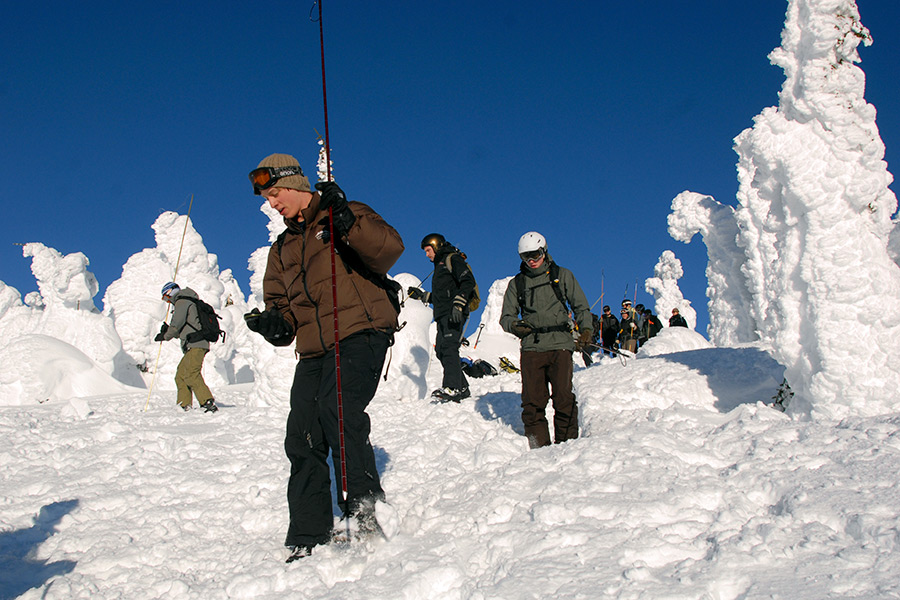For the first time in Flathead Valley history, the community’s avalanche center will issue public snow advisories every day of the week. Winter backcountry users have anticipated this historic expansion in services ever since the Flathead National Forest shuttered the struggling Glacier Country Avalanche Center in 2012 and reinvigorated local operations by opening the FAC. Last year, the FAC posted four advisories per week.
In order to issue the daily advisory, Director Erich Peitzsch, a USGS physical scientist, hired Todd Hannan and Mark Dundas as full-time avalanche specialists with fiscal support from the USDA Forest Service, Glacier National Park, and the Friends of the Flathead Avalanche Center. The FAC is run as a partnership between the Forest Service and the Friends group, a 501(c)3 organization.
“We’re very excited [about putting out daily advisories] for a lot of reasons,” said Peitzsch, who is also the lead forecaster for the Going-to-the-Sun Road. “Avalanches don’t happen on schedule, and this allows us to capture the daily rhythm of the way things happen. It also allows continuity throughout the season. There’s no missing days, days in between [reports] with no information.”
Hannan spent the previous two seasons with the FAC as a part-time forecaster. Before that, he worked for the Idaho Department of Transportation as well as the Washington DOT, where he forecasted conditions on Snoqualmie Pass. He has also spent winter seasons as a ski patroller at resorts including Crystal Mountain and Moonlight Basin.
Dundas, the newest member of the FAC team, has 20 years of snow safety avalanche experience. He spent 10 years forecasting for the BNSF Railway, and has also worked on the patrol staff at Whitefish Mountain Resort.
“I’ve known Erich and Todd for a long time and I really respect both of them,” Dundas said. “I’m really looking forward to working with them and learning from them.”
The extra manpower will also help the center expand its educational offerings.
“We are doing the seven advisories, but getting the right education and equipment is equally as important,” said Hannan. “[The advisories] are a tool for people to track and use what we’re seeing out there, but it’s very important that people get the education.”
The additional information daily advisories provide can’t replace snow safety and backcountry knowledge. The FAC is still adding classes to its schedule, but will offer a handful of 1-hour Avalanche Awareness and Motorized Avalanche Awareness Clinics throughout the season, as well as a companion rescue class and the popular Ladies Avalanche Awareness presentation. The first Intro to Avalanches course, which has both classroom and field sessions, begins December 17. The center will also offer a topic series, providing thorough discussion on specific topics like wet snow, decision-making, and mountain weather.
The forecasters have already put out some preseason snowpack information, and Peitzsch expects to begin issuing regular advisories later in December, though this is dependent on snowfall.
For now, Peitzsch advises, “if you are going into avalanche terrain – it sounds funny to say that when it’s so early – but even in the early season avalanches can happen, so carry a beacon and probe.”
Advisories from the Flathead Avalanche Center, which is based in Hungry Horse, cover approximately 3,300 square kilometers, including the Flathead, Swan, and Whitefish Ranges as well as portions of Glacier National Park. For the FAC’s full educational listings or to check advisories, visit flatheadavalanche.org.
